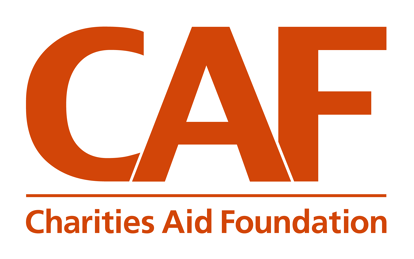With charities feeling the squeeze of the cost-of-living crisis, what more can corporate donors do to support charities in this turbulent time?

The cost-of-living crisis is really starting to bite. With food, energy and fuel bills rapidly rising, we know more people are likely to rely on the services of charities – following already heightened demand during the Covid-19 pandemic.
Yet, charities are having to do more with fewer financial resources. The findings of our UK Giving report 2022 – the largest study of household giving behaviour in the UK – already found that fewer people are giving to charity overall. This trend is exacerbated by rising living costs: many people say they plan to rein in their budgets further, including one in eight cutting back on charity donations.
With rising costs for their own energy and fuel bills, a fall in household donations only adds to financial concerns for many charities and social businesses.
Individuals who are not in need of Government financial assistance have already been advised to donate their £400 energy discount to charity – and claim Gift Aid and tax relief in turn. With charities feeling the squeeze, what more can corporate donors do to support charities in this turbulent time?
Reassess your chosen causes and charities
It may be time to reassess your giving strategy to ensure your funds are going where they’re needed most. Think about how you could have the biggest impact within the parameters of your corporate purpose.
Make sure you truly understand the drivers and social barriers behind issues to help identify the most effective route to tackle them, and identify social organisations that are evidence-led in their work so you know it’s making a difference.
For businesses, ensure you have a clear corporate purpose to guide the selection of your charity partners. Keeping your charities linked to your impact strategy helps guide decision-making, leverage employee engagement through a shared purpose, and achieve greater impact by investing in long-term outcomes rather than short-term outputs.
Increase your flexibility as funders
Whatever charities you partner with, they will always appreciate unrestricted funding. It gives them the freedom and flexibility to allocate the funds where they’re most needed, which may be those all-important core costs to ensure their organisational survival.
Could you prioritise unrestricted donations or loosen some of your usual requirements for grants?
Consider too topping up previous donations to account for inflation or providing more flexibility with existing grants.
Private and corporate donors could consider supporting social enterprises and charities with a loan to a social investment fund, which will give you a social, as well as a financial, return. Social investment loans and blended finance packages (a mix of grant and loan money) are a source of affordable, flexible finance; this can help organisations continue their charitable activities, stabilise and plan for future growth.
Encourage employee engagement with charitable causes
Our analysis shows that the ending of pandemic restrictions are not reflected in overall charity engagement, which is below pre-pandemic levels. February this year saw participation levels as low as during the first lockdown in May 2020.
Corporate donors should consider how best to engage their employees with charitable giving. Be sure to actively listen to your staff to understand their motivations for giving. By working alongside charity partners, find opportunities to create experiences for them to better understand the challenges faced by disadvantaged communities and the benefits that charitable giving has.
Involving them in the reassessment of your giving strategy or selection of partners can foster a connection with the cause area and better engagement with fundraising campaigns. Matching funds can multiply the effect without relying too heavily on individual contributions.
You can also match individual donations through a payroll giving scheme such as Give As You Earn, which encourages regular donations from staff that is both tax-efficient for them and provides charities with a regular income.
Respond strategically to humanitarian crises
When it comes to humanitarian emergencies, we know that people give generously. Our findings showed that people donated larger-than-usual sums to the Ukraine crisis. While this is encouraging, larger donors should consider incorporating longer-term emergency response into their giving strategies to achieve a greater impact.
Donors can disengage after the immediate relief, even before a needs-based assessment has been conducted and a long-term recovery plan has been developed. Instead, taking a longer-term approach to your giving can go beyond providing short-term impact, and instead assist with preparation, mitigation, response and recovery.
Crises sometimes lead to limited funds being redistributed away from existing partnerships or planned donations. To prevent this, consider creating a separate pot in your portfolio or budget for humanitarian emergencies.
Talk to us about your corporate giving
Learn how we can help your business realise greater impact through your giving.
N.B. The information contained in this entry is provided by the above supplier, and does not necessarily reflect the views and opinions of the publisher


